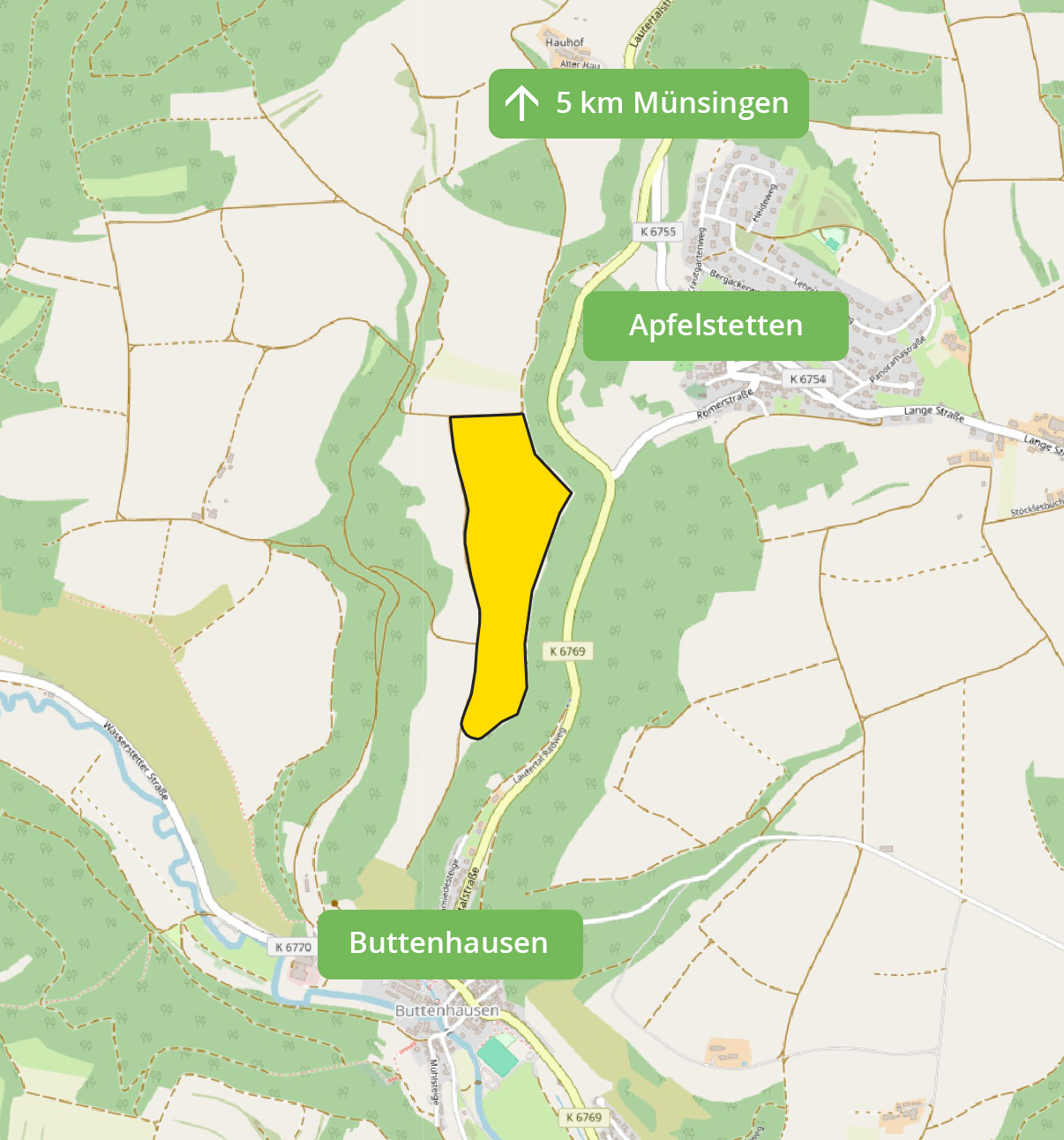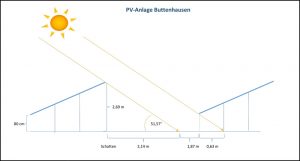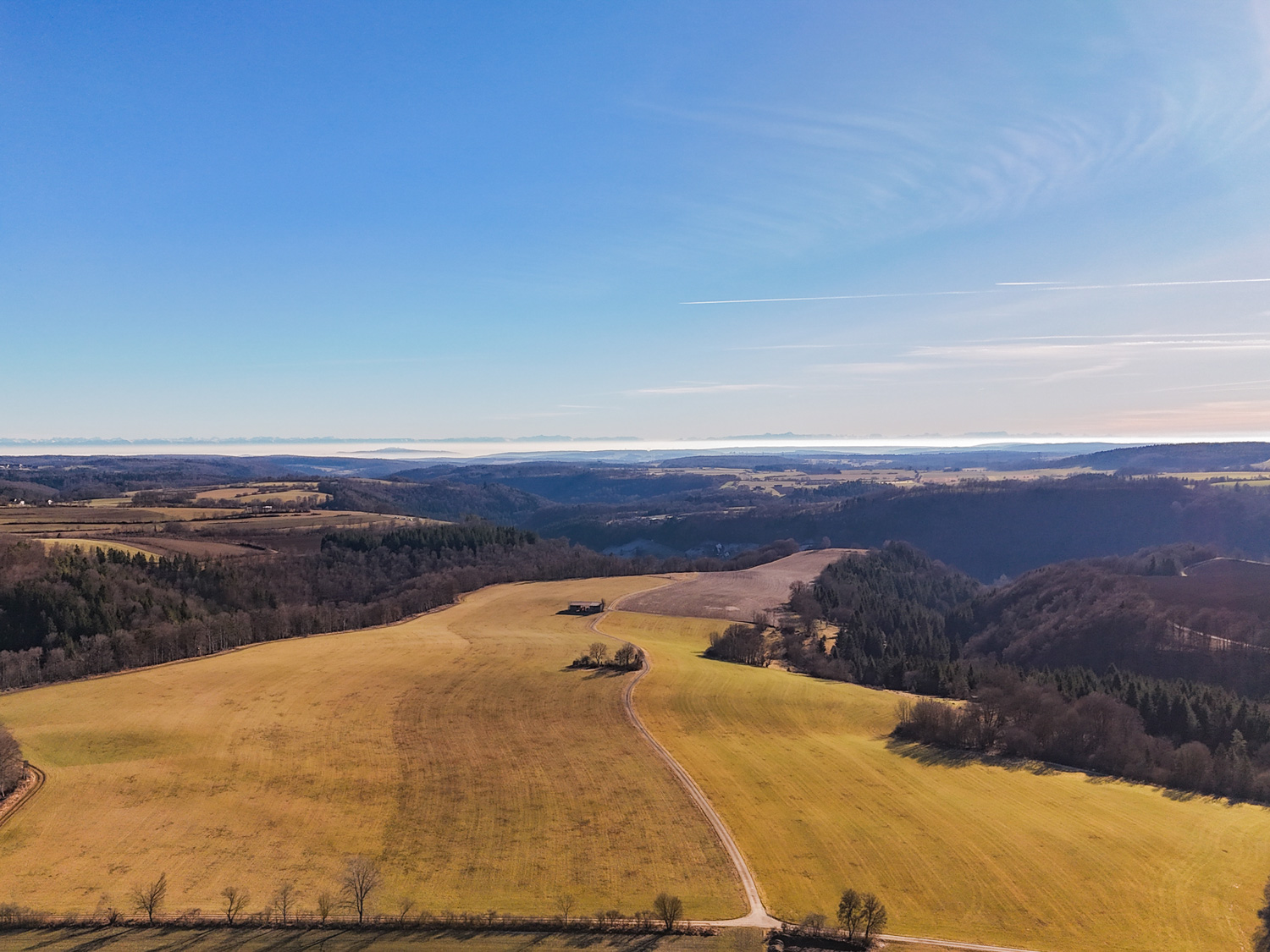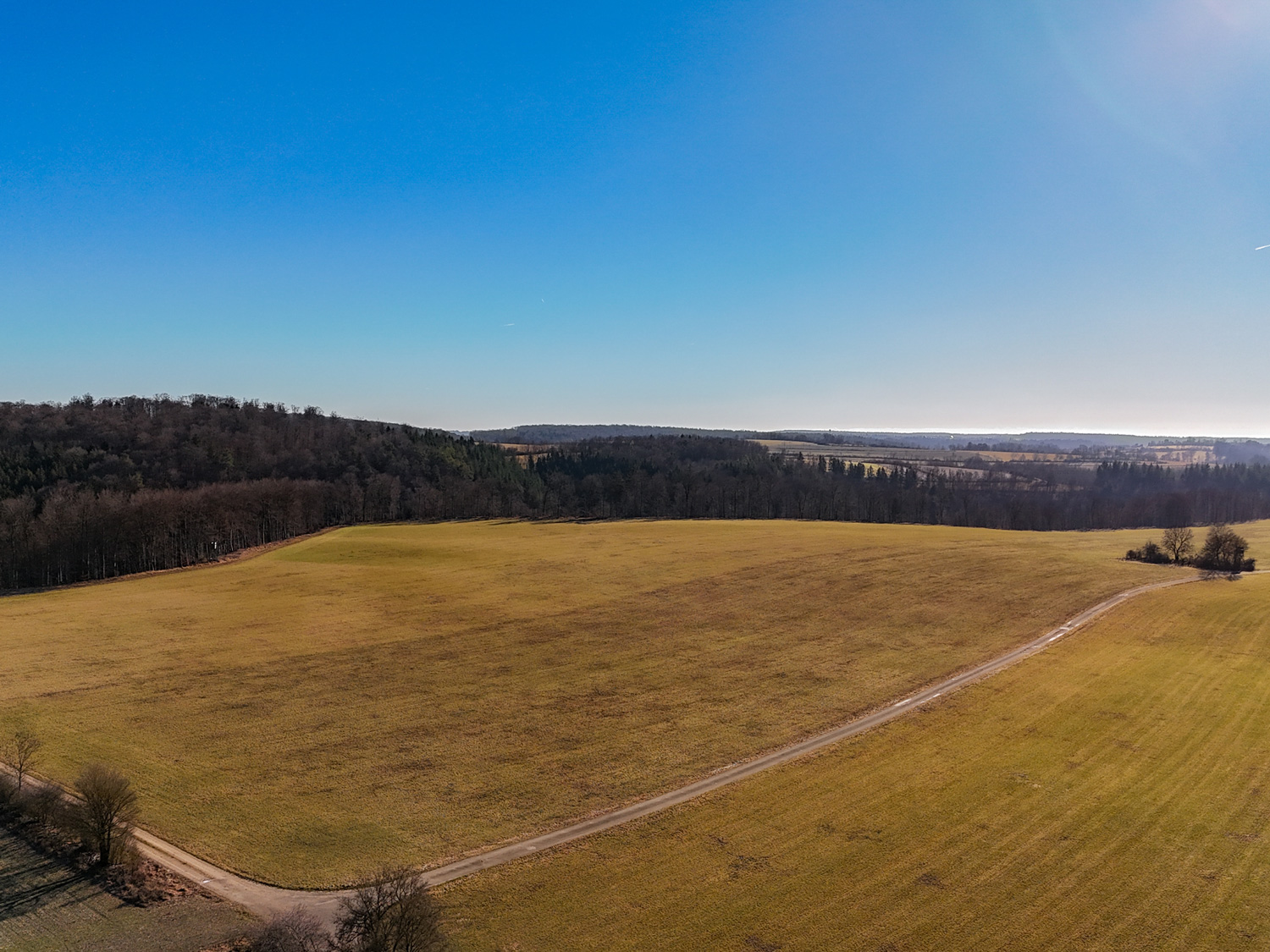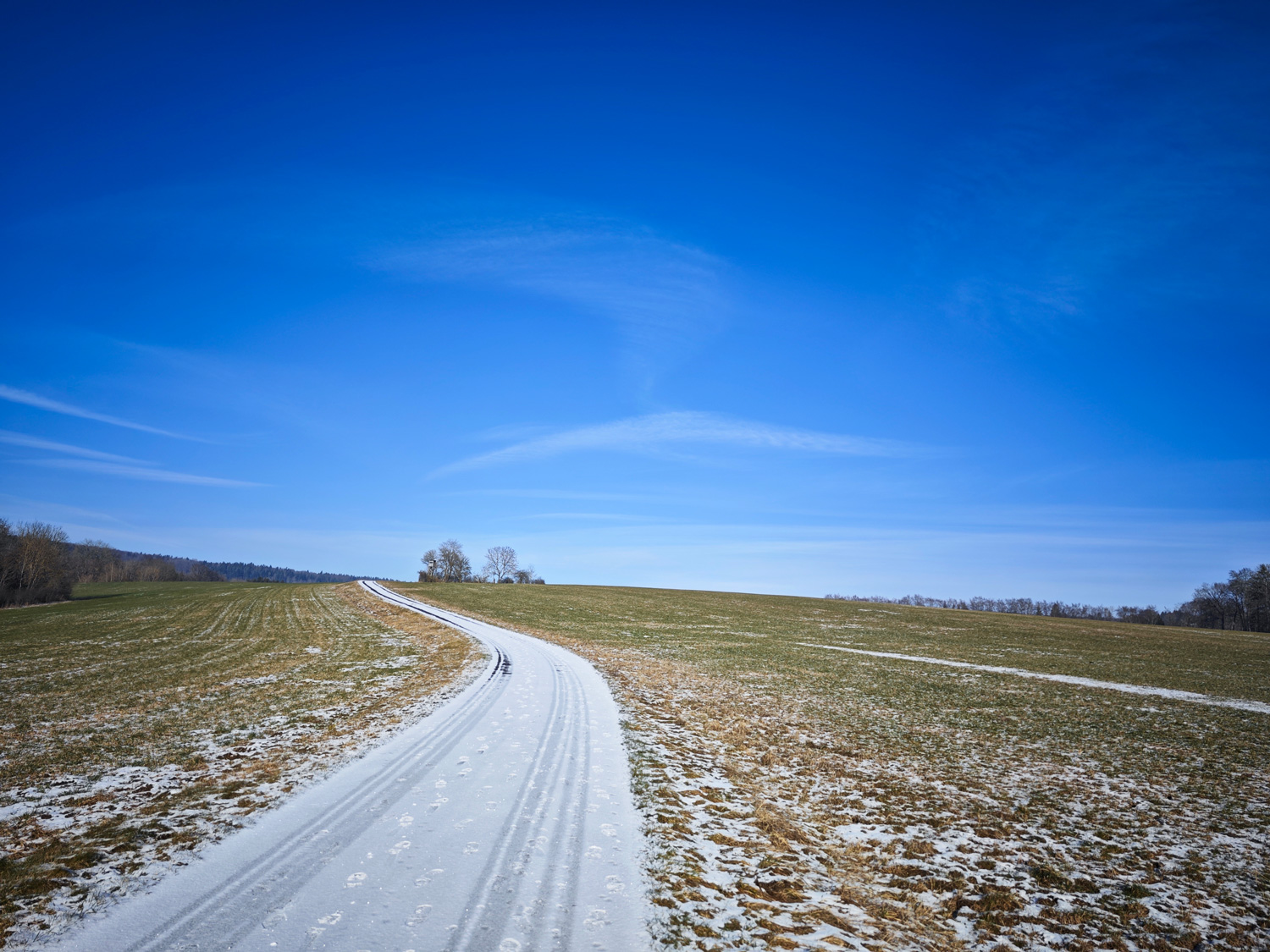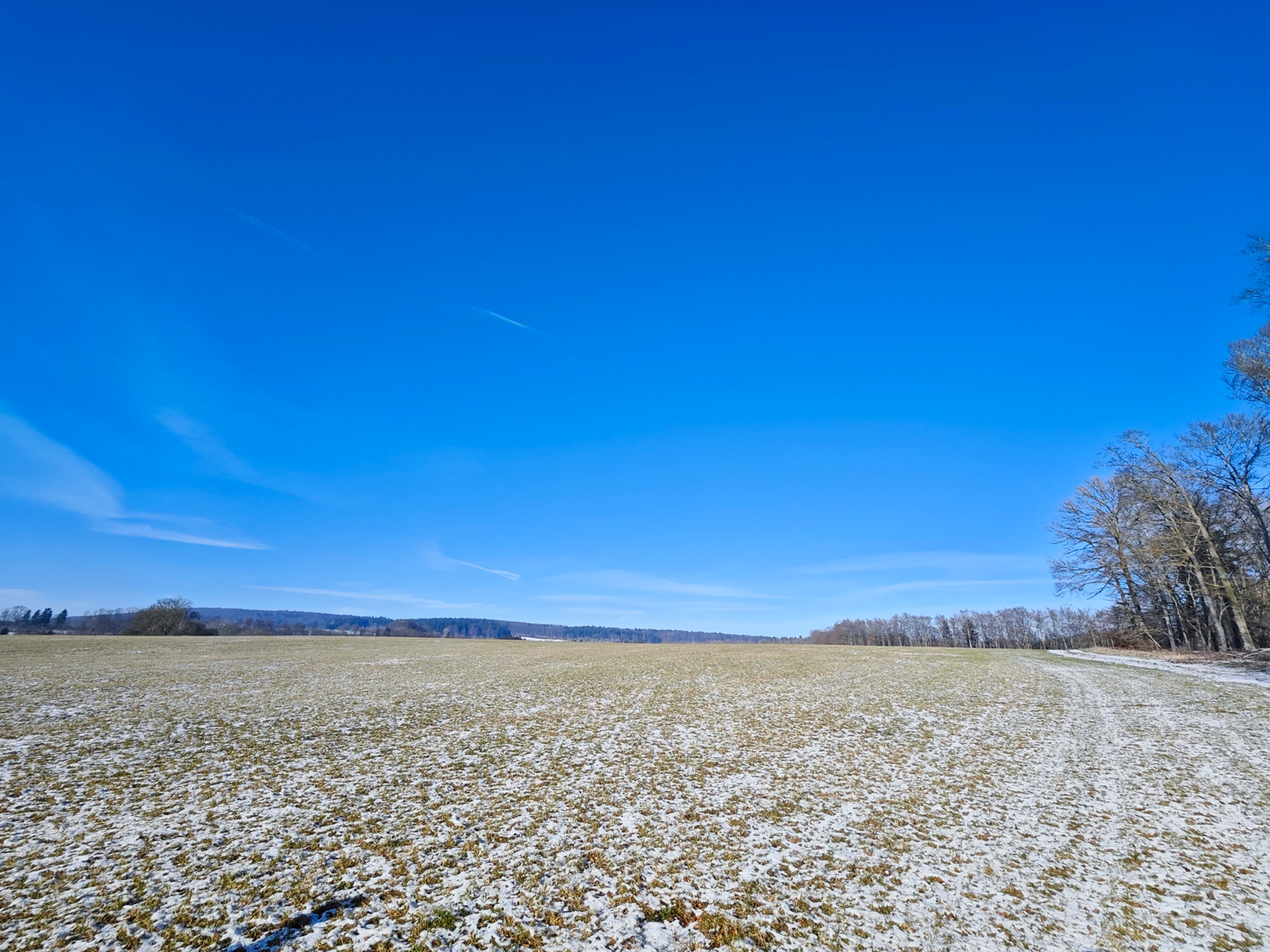In Münsingen, in the Buttenhausen district, we are planning to build an open-field photovoltaic system with a total output of approx. 17 MWp.
The project
The planned open-field solar system extends over 17 hectares on the Galgenberg plateau. The surrounding area is characterized by forests and agricultural areas. The solar park will produce around 19 million kWh of clean electricity per year, which can supply 11.000 people. The necessary lease agreements have already been concluded.
The park implements ecological measures such as sheep grazing, grass verges, wildlife corridors and sunny strips to promote natural diversity. These sustainable approaches serve to achieve ecological balance, preserve biodiversity and protect the soil.
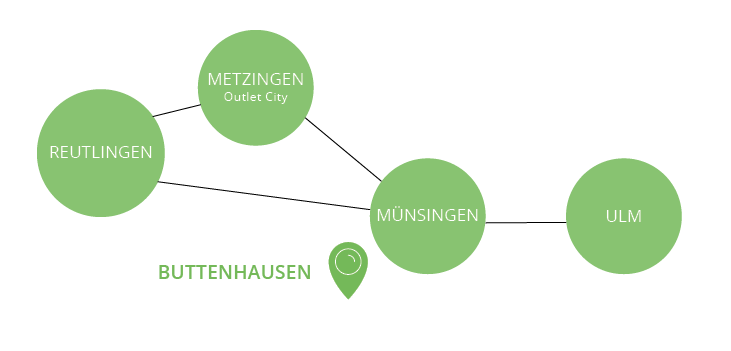
Key data
land area
16,7 ha
Overall Performance
approx. 16,78 MWp
General contractor
MaxSolar
yield
approx. 19.000 MWh /year
CO2 saving
11. 500 t/CO2
Power Supply
approx. 11,000 people
Mains connection
The distribution network operator Netze BW created a network connection point at the substation lake valley approximately 8,8 km north of the planned open spacessolaranlage assigned, where, with the help of a transfer station, it is fed into the public distribution network shall.
project schedule
– All information corresponds to the current planning status –
added value in the region Münsingen
Local security of supply
Location advantage for trade and industry
Contribution to the achievement of the area targets of the federal governmentg
Investment opportunities
Invest together.
Invest with us in a sustainable future and benefit from a material asset that is independent of the capital market. We would be happy to register you for the Buttenhausen solar park.
The citizens of Buttenhausen and the surrounding region (zip codes 72525, 72532, 72537) will primarily have the opportunity to participate. The Schöller SI offers its citizen participation in cooperation with the EENA (Renewable Energies Neckar Alb eG) in the form of cooperative shares. You will find further information on this below.
citizen participation
from €100 to €20.000
Cooperative participation
With the common goal of promoting the economic participation of local citizens, EENA participates in Schöller SI projects and offers local people the opportunity to participate in renewable energy projects in the region through cooperative shares. Find out more here
Renewable Energies Neckar-Alb eG (EENA eG) was founded in 2012 and now has over 1.050 members. Including private individuals, companies and corporations. The board of directors and supervisory board work on a voluntary basis. The cooperative operates, among other things, 25 of its own systems that produce around 2.700 MWh of solar power annually. With the common goal of promoting the economic participation of local citizens, EENA participates in Schöller SI projects and offers local people the opportunity to participate in renewable energy projects in the region through cooperative shares. Find out more here
Membership begins with the subscription of one or more shares and the deposit into the EENA account. Each share has a value of €100 and is purchased without a premium. During membership, additional shares up to the statutory maximum limit can be subscribed or canceled at any time. Members can be natural or legal persons or corporations.
Each share participates in the cooperative's annual surplus distributions from the day it is paid in. Based on the annual financial statements, the Executive Board and the Supervisory Board propose a dividend amount. At the general meeting, the members decide on the use of the surplus and the distribution. The target corridor for dividends of EENA eG is 2,5 – 3,0%.
Each member has one vote in the general meeting (regardless of the number of shares they hold). The members are only liable with the funds they have contributed (no obligation to make additional contributions).
By participating in a cooperative, you avoid the individual risk of an individual investment (risk diversification). You can increase or cancel shares at any time and are therefore involved for as long as you wish. Participation is possible with small individual amounts (from €100). It will not be decimated within the first few years, as is the case with a subordinated loan. You are a voting and contributing member of a regional community of citizens to strengthen renewable energies.
A notice period of one year to the end of the year applies for terminations. Terminated shares will be repaid 100% as soon as the general meeting has approved the annual financial statements for the year of termination. The board can set a temporary limit on the shares per member in order to keep the cooperative's liquidity within reasonable limits.
The detailed regulations, current information about the activities of the cooperative as well as the statutes and declarations of participation/increase/transfer can be obtained via www.eena-eg.de be retrieved
Become a Member
Please fill out the membership form and send it by email to eena-eg@web.de or by mail to
Renewable Energies Neckar-Alb eG
Robert-Heck-Strasse 1
72770 Reutlingen
Limited partnership shares
from € 200.000
LIMITED PARTY SHARE
Limited partnership in the operating company (GmbH & Co. KG). Please fill out the contact form below and we will contact you with further information.
